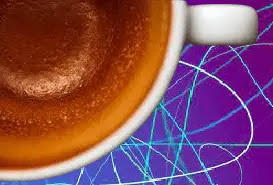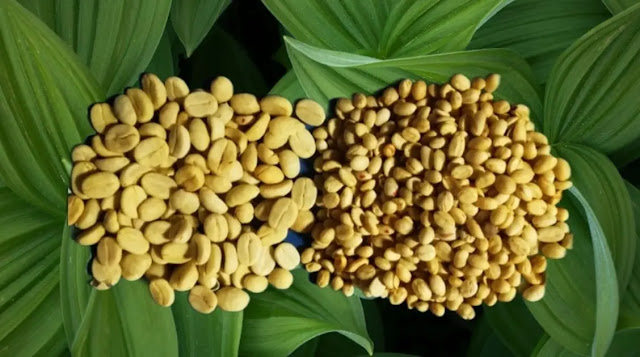Coffee comes in several forms: in beans, soluble, in capsules, there is something for everyone.
We will discover the Health Benefits and Disadvantages of Coffee :The most consumed drink in the world.
Caffeine, a stimulant
Caffeine is a stimulant and acts on the entire central nervous system. Daily, it is recommended not to exceed 400 milligrams of caffeine, which corresponds to four cups of filter coffee or six espressos.
Caffeine increases alertness and concentration.
Thus, it gives an energy boost. After its absorption by the digestive tract, it quickly reaches the brain. There, caffeine blocks the receptors of a substance responsible for soothing the nervous system. As a result, it does not let the brain rest and increases alertness. Hence the fight against drowsiness.
Some athletes are also coffee lovers. By stimulating the nervous system, caffeine improves alertness during sports practice and delays the onset of the feeling of fatigue. A benefit for athletes! Be careful of overdosing so as not to have the negative effects of excessive consumption and choose a coffee without sugar.
Coffee, is an ally against migraine
Coffee is also an ally against migraine thanks to its vasoconstrictor effect, some people also notice that coffee can reduce the pain of a migraine.
Against Parkinson's and Alzheimer's disease
In addition, for those who respect the dose of two to three cups a day, coffee reduces the risk of the onset of Parkinson's disease. Studies have also shown that caffeine can protect neurons and impact different brain mechanisms responsible for the development of Alzheimer's disease.
What impact for type 2 diabetes?
Coffee could also have a role to play against the onset of type 2 diabetes. High consumption would reduce the risk. Thus, a meta-analysis of 200,000 people found that drinking six cups a day reduced the risk of type 2 diabetes by 35%. For the moment, the mechanism of action has not been identified nor the link of cause and effect.
Coffee, an ally against cholesterol?
In February 2022, a Canadian study looked at the role that coffee plays in the fight against cardiovascular disease. Researchers assure that two to three cups of coffee a day contain enough caffeine to trigger a biochemical reaction that leads to a decrease in LDL cholesterol levels in the blood. In 2013, a meta-analysis showed that those who drank three to five cups of coffee a day had a 15% lower risk of cardiovascular disease.
Coffee, is good for the heart but with caution
Regarding the benefits of coffee for coffee, the studies do not follow but are not always alike. In August 2021, a study presented at the annual meeting of the European Society of Cardiology, found those who drank up to three cups a day decreased the risk of death from heart disease, stroke, and premature death. A confirmed benefit in people without a diagnosis of heart disease. According to this study, the risk of death from cardiovascular disease is reduced by 17% and that of stroke by 21%.
So, drink coffee but in moderation. In September 2021, a study warned heavy drinkers. According to work by researchers at the University of South Australia, starting with six cups of coffee a day increases the risk of heart disease.
What impact on the appearance of cancers? What effect?
In February 2022, an English study assured that drinking three coffees a day could reduce the risk of mortality by 15% if the coffee is ground. The risk is even reduced by 25% for those who drink less than three cups. What about other types of coffee? Regarding decaffeinated coffee, more than three cups a day reduced mortality by 17%. These results, therefore, prove that the benefits of coffee are not only in the caffeine, further studies are needed to further explain the mechanisms of action and understand where the benefits come from.
No effect was seen for instant coffee drinkers. Instant coffee contains more caffeine and antioxidants than ground coffee, but it also contains twice as much acrylamide, which is neurotoxic and carcinogenic. This same study found a benefit against liver cancer. A downside, it is important to monitor the temperature of the coffee. Indeed, drinking too hot coffee could increase the risk of developing esophageal cancer.
A vitamin bomb
Coffee is an important source of soluble dietary fiber (19.8 grams per 100 grams of ground coffee). In addition, vitamin B3 (15 milligrams per 100 grams of ground coffee) contained in coffee is involved in the nervous system and the skin. Phosphorus (160 milligrams per 100 grams of ground coffee), is also present in coffee.
What are the contraindications of coffee and its side effects?
Coffee is not recommended for some people. Indeed, pregnant women should not abuse it. According to the World Health Organization, pregnant women should consume no more than 300 mg of caffeine per day or about 3 cups of filtered coffee.
While coffee can have many health benefits, excessive consumption will have the opposite effect. Too much coffee – and therefore caffeine – disrupts concentration. But it all depends on individual sensitivity. Too much coffee can cause loss of alertness, difficulty concentrating, increased blood pressure, and increased heart rate. Also, be careful, the caffeine contained in coffee is added to that present in other needs such as sodas, energy drinks, and tea.
Good to know :
Not all coffees have the same caffeine content. The one that contains the most is unsurprisingly espresso with more than 100 mg of caffeine. In a 235 ml cup of filter coffee, there is between 90 and 200 mg of caffeine. An instant coffee of the same capacity contains between 25 and 175 mg of caffeine.
The longer the contact between coffee and water, the more caffeine the drink contains.













